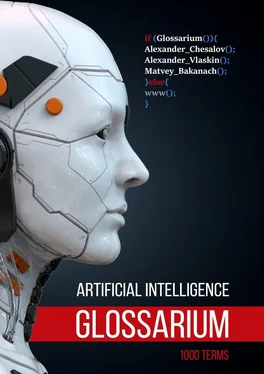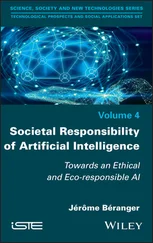Center for Technological Competence (Центр технологических компетенций)is an organization that owns the results, tools for conducting fundamental research and platform solutions available to market participants to create applied solutions (products) on their basis. The Technology Competence Center can be a separate organization or be part of an application technology holding company.
Central Processing Units (CPU) ( Центральный процессор)is a von Neumann cyclic processor designed to execute complex computer programs.
Centralized control (Централизованное управление)is a process in which control signals are generated in a single control center and transmitted from it to numerous control objects.
Centroid (Центроид) –The center of a cluster as determined by a k-means or k-median algorithm. For instance, if k is 3, then the k-means or k-median algorithm finds 3 centroids.
Centroid-based clustering (Кластеризация на основе центроида) –A category of clustering algorithms that organizes data into nonhierarchical clusters. k-means is the most widely used centroid-based clustering algorithm. Contrast with hierarchical clustering algorithms.
Character format (Формат символов)
Any file format in which information is encoded as characters using only a standard character-encoding scheme. A file written in “character format” contains only those bytes that are prescribed in the encoding scheme as corresponding to the characters in the scheme (e.g., alphabetic and numeric characters, punctuation marks, and spaces). [ 98 98 Character format [Электронный ресурс] www.umich.edu URL: https://www.icpsr.umich.edu/web/ICPSR/cms/2042#C (дата обращения: 07.07.2022)
]
Chatbot (Чат-бот)is a software application designed to simulate human conversation with users via text or speech. Also referred to as virtual agents, interactive agents, digital assistants, or conversational AI, chatbots are often integrated into applications, websites, or messaging platforms to provide support to users without the use of live human agents. Chatbots originally started out by offering users simple menus of choices, and then evolved to react to particular keywords. “But humans are very inventive in their use of language,” says Forrester’s McKeon-White. Someone looking for a password reset might say they’ve forgotten their access code, or are having problems getting into their account. “There are a lot of different ways to say the same thing,” he says. This is where AI comes in. Natural language processing is a subset of machine learning that enables a system to understand the meaning of written or even spoken language, even where there is a lot of variation in the phrasing. To succeed, a chatbot that relies on AI or machine learning needs first to be trained using a data set. In general, the bigger the training data set, and the narrower the domain, the more accurate and helpful a chatbot will be [ 99 99 Сhatbot [Электронный ресурс] www.cio.com URL: https://www.cio.com/article/189347/what-is-a-chatbot-simulating-human-conversation-for-service.html (дата обращения: 07.07.2022)
].
Checkpoint (Контрольная точка) —Data that captures the state of the variables of a model at a particular time. Checkpoints enable exporting model weights, as well as performing training across multiple sessions. Checkpoints also enable training to continue past errors (for example, job preemption). Note that the graph itself is not included in a checkpoint.
Chip (Чип) – an electronic microcircuit of arbitrary complexity, made on a semiconductor substrate and placed in a non-separable case or without it, if included in the micro assembly.
Class (Класс) —One of a set of enumerated target values for a label. For example, in a binary classification model that detects spam, the two classes are spam and not spam. In a multi-class classification model that identifies dog breeds, the classes would be poodle, beagle, pug, and so on.
Classification (Классификация).Classification problems use an algorithm to accurately assign test data into specific categories, such as separating apples from oranges. Or, in the real world, supervised learning algorithms can be used to classify spam in a separate folder from your inbox. Linear classifiers, support vector machines, decision trees and random forest are all common types of classification algorithms.
Classification model (Модель классификации) —A type of machine learning model for distinguishing among two or more discrete classes. For example, a natural language processing classification model could determine whether an input sentence was in French, Spanish, or Italian.
Classification threshold (Порог классификации) —A scalar-value criterion that is applied to a model’s predicted score in order to separate the positive class from the negative class. Used when mapping logistic regression results to binary classification.
Clinical Decision Support (CDS) (Поддержка принятия клинических решений) – A clinical decision support system is a health information technology system that is designed to provide physicians and other health professionals with clinical decision support, that is, assistance with clinical decision- making tasks [ 100 100 Clinical Decision Support (CDS) [Электронный ресурс] www.quora.com URL: https://www.quora.com/What-are-clinical-decision-support-systems-What-benefits-do-they-provide (дата обращения 28.02.2022)
].
Clipping (Отсечение) –A technique for handling outliers. Specifically, reducing feature values that are greater than a set maximum value down to that maximum value. Also, increasing feature values that are less than a specific minimum value up to that minimum value. For example, suppose that only a few feature values fall outside the range 40—60. In this case, you could do the following: Clip all values over 60 to be exactly 60. Clip all values under 40 to be exactly 40. In addition to bringing input values within a designated range, clipping can also used to force gradient values within a designated range during training.
Closed dictionary (Закрытый словарь) –In speech recognition systems, a dictionary with a limited number of words, to which the recognition system is configured and which cannot be replenished by the user
Cloud (Облако) – The cloud is a general metaphor that is used to refer to the Internet. Initially, the Internet was seen as a distributed network and then with the invention of the World Wide Web as a tangle of interlinked media. As the Internet continued to grow in both size and the range of activities it encompassed, it came to be known as “the cloud.” The use of the word cloud may be an attempt to capture both the size and nebulous nature of the Internet [ 101 101 Cloud [Электронный ресурс] // dropbox.com URL: https://www.dropbox.com/ru/business/resources/what-is-the-cloud (дата обращения: 09.02.2022)
].
Cloud computing (Облачные вычисления) is an information technology model for providing ubiquitous and convenient access using the Internet to a common set of configurable computing resources (“cloud”), data storage devices, applications and services that can be quickly provided and released from the load with minimal operating costs or with little or no involvement of the provider.
Читать дальше












